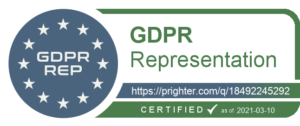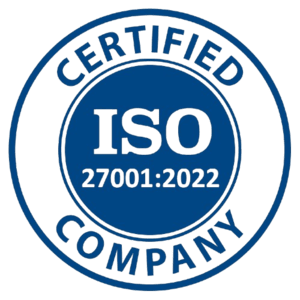
To achieve the desired results, the success of webinar marketing campaigns is crucial. The right webinar marketing strategies empower you to expand your reach, maximize registrations, webinar attendance, and boost your ROI.
This guide will take you through the tips and tricks to put together a cohesive and successful webinar campaign that will reap results.
Top Strategies for Successful Webinar Campaigns

Developing and implementing a solid webinar marketing strategy is important for attracting and engaging your target audience, establishing authority, and driving sales.
A thorough action plan for creating effective webinar campaigns and improving your webinar marketing strategy is provided below. Make your way to the end to know.
1. Identify Webinar Goals and Objectives
Setting specific objectives for your webinar is the first step towards a successful campaign.
Whether your goal is lead generation, brand awareness, or a product launch, having a clear objective will guide your planning and execution. Follow up with the steps mentioned below.
- Identify Ideal Outcomes: Determine the specific outcomes you want to achieve with your webinar.
- Set Measurable Goals: Establish metrics to track success, such as attendee numbers, lead conversions, or engagement rates.
- Align with Business Objectives: Ensure your webinar objectives support broader business objectives and marketing initiatives.
2. Identify the Target Audience
Understanding your audience is important for creating relevant content and promotional strategies that relate to their needs and interests. You can do the following:
- Create profiles for the buyers: Create detailed profiles that include demographics, interests, issues, etc.
- Conduct Audience Research: Use surveys, social media analytics, and customer feedback to gather insights and improve your audience targeting.
- Strategy for Segmentation: Divide your audience based on a variety of factors like industry, job role, or geographic location to modify your approach effectively.
3. Improve the Webinar Landing Page
An effective landing page is important to increase traffic and encourage registrations. It should clearly communicate the value of attending your webinar and make it easy for visitors to sign up.
You can go with the following steps.
- Create Strong Copy: Use language that is convincing, highlights benefits, and addresses audience issues and concerns.
- Include a Crisp Registration Form: Keep it simple and ask for essential information to enable further communication.
- Use Visuals and Testimonials: Include videos, testimonials, and graphics to increase credibility and engagement.
- Implement SEO Best Practices: Improve content with relevant keywords to increase organic search visibility.
4. Make a Timeline
Making a campaign timeline will help you keep track of all the deadlines and tasks before the webinar launch, which will help ensure everything goes as planned.
You can go with the following points.
- Set Launch Date: Begin with the webinar date and work backwards to allocate time for preparation, promotion, and rehearsal.
- Define Milestone: Establish deadlines for tasks such as content creation, speaker confirmations, and promotional campaigns.
- Allocate Resources: Assign responsibilities and resources effectively to meet deadlines and maintain quality.
5. Choose the Right Webinar Topic
Selecting a relevant and engaging topic is important for attracting your target audience and increasing registrations. Go with the below key points and make your work easier.
- Research Audience Interests: Conduct surveys, monitor social media discussions, and analyze keyword trends to know the popular topics.
- Align with Business Objectives: Ensure the topic aligns with your brand’s expertise and supports your marketing goals.
- Look at Evergreen vs Trending Topics: Balance between topics that provide long-term value and those addressing current industry trends.
6. Encourage Cross-functional Involvement:
Work with internal teams to maximize webinar impact and ensure that it meets broader business objectives. These 3 points are important to remember:
- Set Common Goals: Align webinar objectives with sales and customer success initiatives to increase revenue and customer loyalty.
- Use Expertise: Tap into the knowledge and networks of sales and customer success teams to promote the webinar and engage prospects.
- Organize Follow-Up: Plan post-webinar activities such as nurturing leads, reaching out to customers, and content distribution to maximize ROI.
7. Choose the Right and Marketing Tools & Channels
Selecting effective marketing channels and strategies will promote your webinar and attract the right audience. Consider the following options: :-
- Email Marketing: Use segmented email lists to promote the webinar with strong CTAs and personalized messaging.
- Social Media Promotion: Use platforms where your audience is active to share teasers, updates, and testimonials about the webinar.
- Paid Advertising: Invest in targeted ads on search engines, social media, and industry websites to increase the reach and attract new attendees.
- Content Marketing: Create blog posts, videos, etc. that support the webinar topic and bring traffic to the landing page.
8. Choose the right Webinar Platform
Choosing the right webinar platform is crucial to the overall success of your webinar. Go with the platform that serves your business goals, and offers you and your attendees the best event experience. Make sure to do thorough research on the features and capabilities offered by the selected options, and opt for the one that provides the most value.
Airmeet stands out as an ideal webinar platform because of its user-friendly interface, interactive features, and scalability.
It also has several features to promote networking among participants. Interactive tools, such as live Q&A sessions and polls, enhance audience engagement and provide real-time feedback. Its powerful analytics and robust customization capabilities also provide immense value to event marketers hosting regular webinars.
Case Studies and Examples of Successful Webinar Campaigns

Since you know the strategies for creating successful webinar campaigns, it’s time to look at real-world examples that show these concepts in action.
By examining the following case studies, you will gain valuable insights into how leading companies have effectively crafted their webinar campaigns to engage their target audiences, generate leads, and achieve their business goals
These case studies will provide strong examples of how strategic planning, engaging content, and effective promotion can lead to remarkable webinar success, serving as a helpful guide for your future marketing efforts.
1. HubSpot: Content Marketing Strategy Webinar
HubSpot’s “Content Marketing Strategy” webinar is a prime example of connecting material with audience needs.
The webinar covered practical strategies for developing an effective content marketing plan, providing attendees with actionable insights and tools.
They promoted the event through their blog, social media channels, and email campaigns, resulting in high registration and attendance rates.
This campaign shows how multiple promotional methods can increase reach and engagement.
2. Adobe: Creative Cloud Webinar Series
Adobe’s Creative Cloud webinar series focused on educating users about their software suite, featuring product examples, expert tips, and live Q&A sessions.
These webinars were promoted through targeted email campaigns, social media, and partnerships with industry influencers.
This strategy increased attendance and engagement, enhancing product understanding and customer satisfaction.
This demonstrates how webinars can be used to encourage participation and build brand loyalty.
3. Salesforce: Increasing Customer Success with Webinars
Salesforce’s “Success Cloud” webinars provided best practices, tips, and tutorials on using their CRM tools effectively.
Including actual customer success stories and interactive Q&A sessions, these webinars created an engaging and educational experience.
The webinars highlighted ongoing value and support, contributing to customer loyalty and satisfaction.
This webinar campaign shows the role of webinars in encouraging customer satisfaction and adoption of products.
4. Cisco: Thought Leadership and Brand Awareness
Cisco’s “Tech Talk” webinar series included industry experts discussing emerging trends and innovations in technology and networking solutions.
These webinars were promoted through email marketing, social media, and collaborations with tech organizations, which established Cisco as a leader in the tech industry.
This campaign built brand awareness and established it as a thought leader, showing the effectiveness of webinars in enhancing visibility and leadership in the industry.
These case studies show the diverse applications and important benefits of webinars in marketing, lead generation, customer engagement, and brand building.
By implementing effective webinar marketing strategies, businesses can achieve great success and generate significant results.
Over To You…
Designing an effective webinar marketing campaign is important for engaging your target audience and driving business success. Use the right webinar platform, create a compelling registration page, and choose relevant webinar topics to attract potential attendees.
By aligning your marketing strategy with business goals and using valuable insights, you can enhance brand awareness and establish thought leadership in your industry.
Frequently asked questions
Webinars play an important role in modern marketing strategies due to their ability to reach a global audience without geographical constraints. They increase audience engagement through interactive features like live Q&A sessions and polls, fostering direct connections between businesses and potential customers.
They also serve as effective lead generation tools, allowing businesses to collect valuable attendee data for targeted follow-ups and future marketing initiatives.
Businesses could tap into the potential of interactive features such as live polls and Q&A sessions to encourage real-time participation and address audience queries directly.
Personalizing content to match attendee interests and pain points increases relevance and sustains engagement throughout the session. Additionally, using post-webinar email follow-ups to provide valuable resources and key takeaways helps maintain attendee interest beyond the live event.
Content is essential for successful webinar marketing, as it increases attendees’ interest and engagement. Choosing relevant and timely topics that match with audience needs and industry trends ensures webinar and attendee relevance.
Incorporating interesting visuals, such as infographics and videos, increases content presentation and supports effective communication.
Moreover, repurposing webinar content into blog posts, articles, or social media updates extends its reach.
Using email marketing campaigns with personalized messaging and compelling CTAs helps target specific audience segments and increase registrations.
Social media platforms serve as valuable tools for sharing promotional material, testimonials, and event updates to generate buzz and increase webinar visibility.
Investing in targeted marketing campaigns on search engines and relevant industry websites increases reach and attracts new attendees. Additionally, promoting webinar landing pages with SEO best practices and visually appealing content ensures maximum conversion rates.
While choosing the right webinar platform, look for one that offers a user-friendly interface, interactive features like live Q&A and polling, powerful analytics and reporting, seamless integrations, robust customization and branding functionalities, and scalability to accommodate a desired number of attendees, among other functionalities.
Also ensure that the platform has all necessary data privacy, security, and other compliance certifications in place.





























